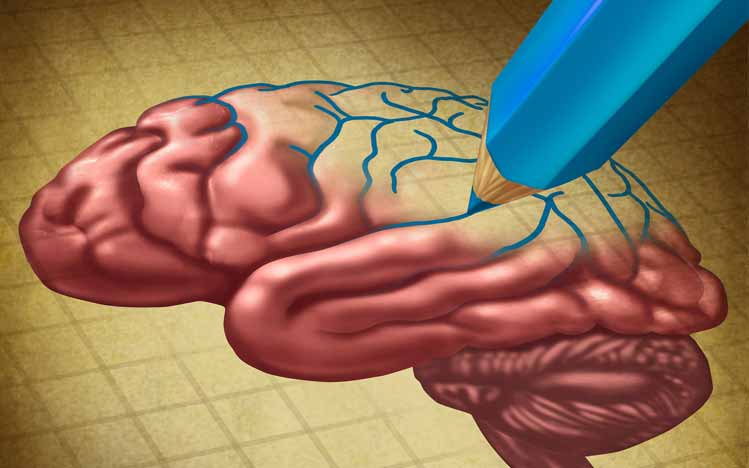Catie's Blog
The Happy Brain
Basics of a Blissful Brain
When you complete a new task, new habits and good health, the brain and its many cortices begins to reorganize and rewire itself. Over time, this circuit becomes better and better defined, making the transmission of the neural message more efficient and making you better at the new task, in essence keeping the brain youthful and active. There are several things you can do on a daily basis to ensure that you are creating this rewiring. Read on for some great tips!
“Eat the Rainbow”
Believe it or not, your brain rusts as you get older. The end result is Alzheimer’s, or as one of our patient’s called it, “old timer’s disease”. But thankfully, nature has provided the perfect WD-40 lubricant. It is the rainbow of colorful fruits and vegetables – the dark purples of blueberries, the deep reds of pomegranates, the rich green of kale and collards, the bright orange of sweet potatoes. All these colorful foods provide powerful antioxidants. That’s a good thing, because, as a recent study in the Journal of the American Medical Association found, people who ate more dietary antioxidants had 70% less Alzheimer’s and dementia. This is one powerful way to control one of the major causes of all disease – rusting or oxidative stress. Eat 8 – 10 servings (1/2 cup = 1 serving) of these lifesaving colorful fruits and vegetables a day to protect your brain.
Many Americans are vitamin deficient. We are the most overfed and undernourished country in the world. The meat, sugar, alcohol, coffee and cigarettes we consume in excess all deplete us of critical B vitamins that are needed to keep us healthy. Without adequate amounts of folate, B6 and B12 we are at increased risk for Alzheimer’s, dementia, Parkinson’s, and depression, not to mention heart attacks, strokes, breast, colon, cervical, lung and prostate cancer. If that isn’t enough, women deficient in folate before or during pregnancy are more likely to give birth to children with spinal cord defects and Down’s syndrome. One recent study found those with the highest homocysteine had twice the risk of getting dementia and Alzheimer’s. Thankfully, you can easily fix this. First ask your doctor to check your blood level of homocysteine. The ideal level is less than 9. Most people do well with about 1000 mcg of folic acid (the minimum RDA level is 400 micrograms), 25-50 mg of B6 and 500-1000 mcg of B12. But be sure to recheck your blood level of homocysteine and make sure it is in range. Also cut down on meat, alcohol, caffeine and sugar and increase your intake of dark leafy greens!
Stop the Sugar
The sugar epidemic (an average of 150 lbs per person per year) is directly responsible for obesity in 2/3 of Americans. Diabetics have four times the risk of getting dementia. Too much sugar leads to high levels of insulin [link to healing / insulin resistance] in your blood. That makes you gain weight around the middle, raises your blood pressure and leads to rusting [prevention / rust] and inflammation [prevention / heat]. So next time you reach for that cookie or soda, just think of what’s happening in your brain. Thankfully this problem can be prevented by eating properly and exercising regularly:
- Avoid the “white menace” – white sugar, white flour and white fat (Crisco or “hydrogenated fat”.)
- Eat more fiber
- Eat some protein with every meal.
- Exercise in your target heart rate for 30 to 40 minutes at least 4 times a week
Thankfully you can tell if you are in trouble and have to mend your devilishly sweet ways. Just ask your doctor for a blood test. It is called a glucose tolerance test. Be sure you ask your doctor to measure BOTH glucose AND insulin. Two hours after a sugar drink your blood sugar should be less than 140 and your insulin less than 30. If not, you better quit the sugar and get moving!
Daily fish oil, a meditative practice, a good night’s sleep and stress relief, all things you can easily do, and do it today!




